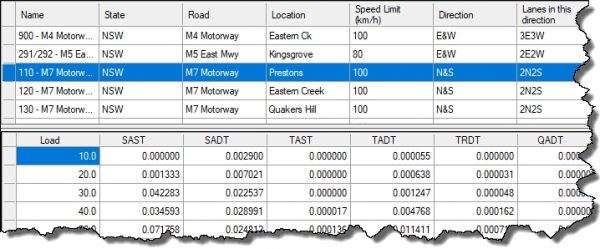Weigh in Motion (WIM) and Pavement Design
Weigh-in-motion or weighing-in-motion (WIM) devices are designed to capture and record the axle weights and gross vehicle weights as vehicles drive over a measurement site. Unlike static scales, WIM systems are capable of measuring vehicles traveling at a reduced or normal traffic speed and do not require the vehicle to come to a stop. This makes the weighing process more efficient, and, in the case of commercial vehicles, allows for trucks under the weight limit to bypass static scales or inspection.
Reference: From Wikipedia, the free encyclopedia.
The CIRCLY 7.0 Pavement Design software lets you directly input data from Weigh-in-motion devices.
Here’s an example of CIRCLY 7.0‘s Traffic Load Distribution screen:

The lower table is a Traffic Load Distribution derived from a Weigh-in-motion device.
The full details of how the Traffic Load Distribution is used are given in the 2017 edition of the Austroads Pavement Structural Design Guide – the basis for road pavement design in Australia and New Zealand.
More background to Weigh-in-motion technology is given in Guide for Users of Weigh-In-Motion – An Introduction to Weigh-In-Motion – an 81 page document published by ISWIM, International Society for Weigh-in-Motion.
Authors: Hans van Loo and Aleš Žnidarič.
Version: 1.1, May 2019.
